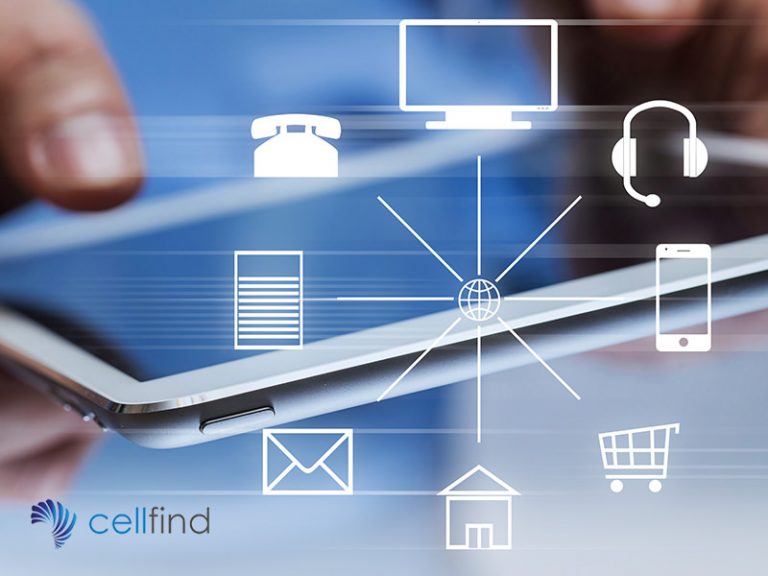Those of us with children (and some without) will remember the artificial intelligence known as the Omnidroid from The Pixar movie The Incredibles. The nefarious strategy which made this evil droid so successful was that it learned from the problems it encountered and wound up being able to defeat any superhero, on any platform, by taking the best moves from the previous hero.
We’re pretty sure that you’re not planning world domination by droid – at least we hope not – but you are likely looking for a newer, better, faster way to grow your business.
And that’s why we’re talking about omnichannel marketing today.
What is Omnichannel Marketing?
Omnichannel marketing is an approach to sales and service which makes the best use of multiple channels, or platforms, to ensure a seamless and harmonious customer experience.
We know that innovation is generally a reply to a problem, and in this case, omnichannel marketing is a response to many: ad blindness, ad blockers, skip ad buttons, spam folders, and unsubscribes.
Digital marketing was never easy, but it’s becoming more challenging as sales resistance grows. Consumers have become more aware of the barriers that they can put in place to drown out the noise of a million brands who are trying to capture their attention.
Give me an example of omnichannel marketing
Not all your customers are on Facebook. Not all your customers will see your ads. It’s possible that many of your ideal clients don’t even know who you are. Here’s how omnichannel marketing jumps in to solve this problem.
Matthew has a small shop selling homoeopathic remedies.
He has beautiful signs created to direct customers his way (channel 1) and he has flyers printed which he hands out in the mall where he operates (channel 2).
Matthew needs more foot traffic, so he runs an ad on Google and targets people who are searching for some of the products that he sells (channel 3). He also runs some display ads (channel 4) highlighting the problems which his products can solve, and these ads are all sent to a landing page (channel 5). Matthew then creates a special offer which he adds to his Facebook page (channel 6) and he runs a few ads to showcase these.
His landing page talks about his experience, offers advice, and directs customers to his shop. These customers may sign up for a newsletter (channel 7) and he may drop a cookie on their browser so he can remarket to them until they become loyal customers (channel 8).
Matthew also gets involved in location-based services where his shop will send a message to customers or potential customers when they are in a certain radius of his shop, and offer them specials or simply a gentle reminder (channel 9).
Multichannel marketing (using various platforms) has now morphed into omnichannel marketing for Matthew as he creates a beautiful customer journey, giving them what they need when they need it, and on their platform of choice.
Omnichannel in Business
The process of omnichannel marketing, much like the Omnidroid mentioned earlier, makes the best use of various platforms to pave a perfect customer experience.
While each customer journey will differ depending on your business or industry, the sequence will remain much the same.
- Attention/ Awareness
- Research
- Consideration
- Evaluation/comparison
- Conversion
- Retention
- Advocacy
Who is your ideal customer, and where do they hang out online? Once you can answer this question, you will know where to start their journey to make them aware of your product.
Is your customer likely to research a product or ask a question on a social platform? If so, which one? What information do they need to evaluate your product and view you as an authority? How do you stack up against your competitors?
Your marketing strategy should be able to answer all these questions, and this is the beginning of your exciting foray into omnichannel marketing.
Omnichannel on mobile
We mentioned earlier that not everyone will be on the channels that you’re using to market, however, they are very likely to have a mobile phone.
This means that we can make use of a host of tools to communicate with our audience. For example:
- Unstructured Supplementary Service Data (USSD)allows businesses to interact and transact with customers using any GSM handset. This menu-driven communications protocol can be used to provide customers with information services, including important news, and interactive services, including surveys and competitions.
- Omnichannel Communications Platform as a Service (CPaaS)offers real-time communications features, including voice, chat, and mobile messaging, to allow messages to persist across different channels and platforms. (This product is in the final testing phase and Cellfind will be releasing it soon)
Businesses are realising with startling clarity that many customer journeys begin on mobile and end on a home PC or vice versa. Therefore, having the knowhow and the tech to cover as many of your bases as possible makes good business sense. Don’t you agree?
We’re sure you have questions. If you would like to understand how omnichannel marketing can work for your business – especially on a mobile platform – then we would be thrilled to assist you.
Contact the Cellfind team here.



3 thoughts on “What is Omnichannel Marketing? What Does it Mean for My Business?”